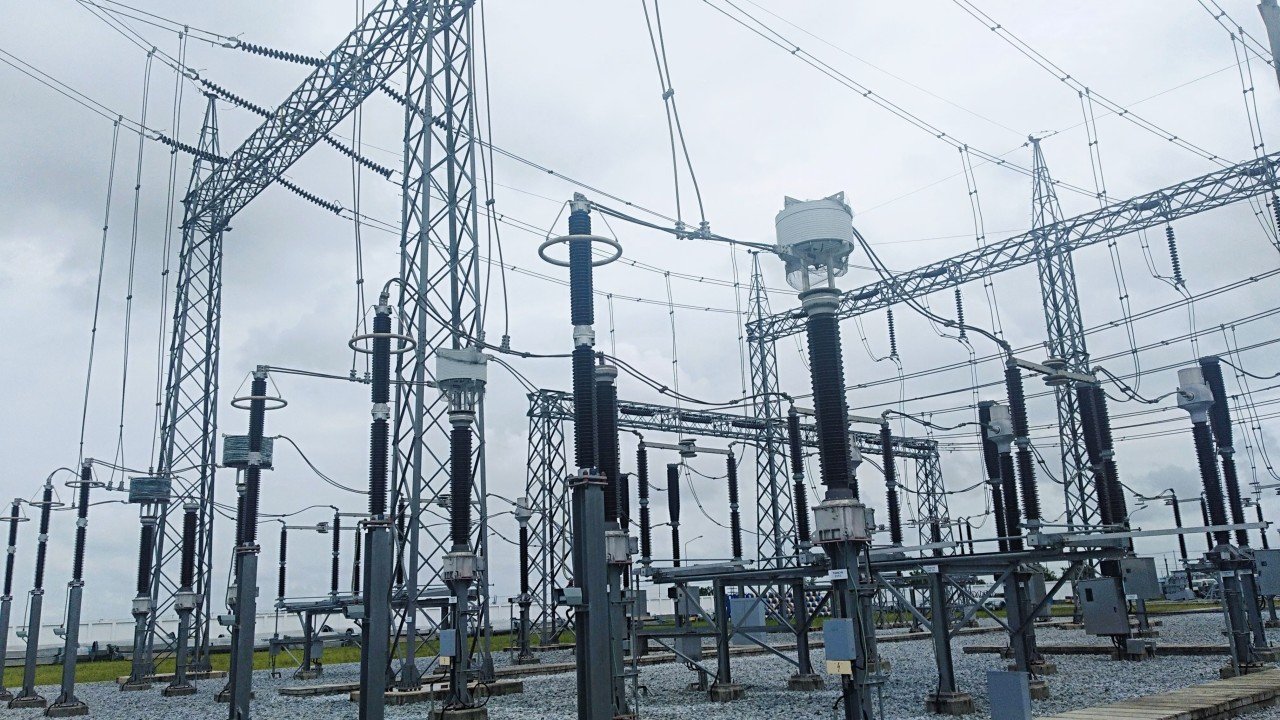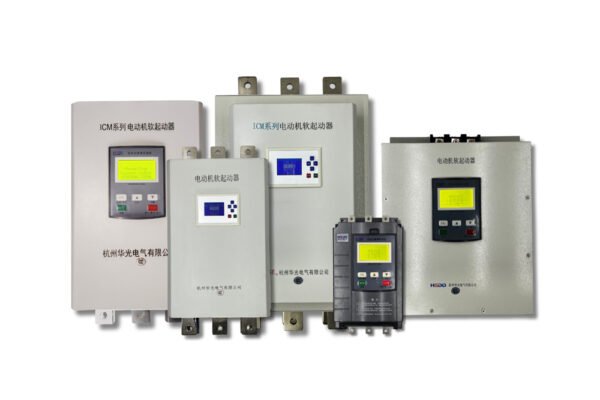
LVSS and HVSS: What Are They? Differences and Applications
A Motor Soft Starter is an essential device used to control the acceleration and deceleration of electric motors, reducing mechanical stress and preventing sudden electrical surges. Soft starters can be categorized into Low Voltage Soft Starters (LVSS) and High Voltage Soft Starters (HVSS) based on their operating voltage range. Understanding their differences, working principles, and applications is crucial for selecting the right solution for industrial motor control.
What Is a Low Voltage Soft Starter (LVSS)?
A Low Voltage Soft Starter (LVSS) is designed for motors operating at voltages below 1000V. These soft starters are commonly used in small to medium industrial applications where motors require controlled acceleration and deceleration.
Key Features of LVSS:
- Voltage Range: Typically 200V – 690V
- Reduced Starting Current: Minimizes electrical stress and prevents power fluctuations
- Motor Protection: Guards against overload, phase loss, and voltage imbalances
- Compact Design: Suitable for limited-space installations
- Easy Integration: Compatible with industrial automation systems
Common Applications of LVSS:
- Pumps: Water supply, wastewater treatment, irrigation
- Compressors: Industrial air compression systems
- HVAC Systems: Fans and blowers in air conditioning systems
- Conveyor Belts: Smooth material handling in factories
- Small to Medium-Sized Machines: Milling, grinding, and packaging equipment
LTICM Series Low-voltage Motor Soft Starter
What Is a High Voltage Soft Starter (HVSS)?
A High Voltage Soft Starter (HVSS) is used for motors operating at voltages above 1000V, typically in large-scale industrial applications requiring high power and torque. These starters are designed to handle heavy-duty machinery with advanced protection and efficiency features.
Key Features of HVSS:
- Voltage Range: 1000V – 15kV
- High Power Handling: Supports large industrial motors with high starting torque requirements
- Enhanced Protection Mechanisms: Prevents overvoltage, overheating, and short circuits
- Energy Efficiency: Reduces power spikes and improves operational stability
- Robust Design: Built for harsh industrial environments
Common Applications of HVSS:
- Mining and Drilling Equipment: Crushers, excavators, and drilling rigs
- Large Industrial Pumps: Oil and gas pipelines, power plants
- Steel and Cement Plants: Kilns, mills, and heavy machinery
- High-Power Fans and Turbines: Industrial cooling systems
- Marine and Shipyard Applications: Large-scale propulsion systems
HVLTICM Series High-voltage Motor Solid State Soft Starter
LVSS vs. HVSS: Key Differences
| Feature | Low Voltage Soft Starter (LVSS) | High Voltage Soft Starter (HVSS) |
|---|---|---|
| Voltage Range | 200V – 690V | 1000V – 15kV |
| Motor Size | Small to medium motors | Large industrial motors |
| Applications | HVAC, pumps, conveyor belts, small machines | Mining, oil & gas, steel plants, turbines |
| Starting Current Control | Reduces inrush current | Significantly lowers high inrush current |
| Protection Features | Basic motor protection | Advanced motor protection |
| Cost | Lower | Higher |
| Installation Complexity | Simple | More complex |
| Space Requirement | Compact | Requires more space |
How to Choose Between LVSS and HVSS?
When selecting a Motor Soft Starter, consider the following factors:
✔ Motor Voltage Rating: If your motor operates below 1000V, choose LVSS; if it requires above 1000V, opt for HVSS.
✔ Application Requirements: For small to medium applications, LVSS is suitable; for heavy-duty industrial motors, HVSS is necessary.
✔ Budget Constraints: LVSS is more affordable, while HVSS requires a higher investment but provides superior performance.
✔ Environmental Conditions: If operating in extreme environments (e.g., mining, oil fields), HVSS offers better protection and durability.
✔ Space Availability: LVSS requires less installation space, while HVSS systems need dedicated panels and safety enclosures.
Common Questions About LVSS and HVSS
1. What is the primary function of a Motor Soft Starter?
A Motor Soft Starter gradually increases the voltage supplied to the motor, reducing inrush current and preventing mechanical stress during startup.
2. Can an LVSS be used for high-voltage applications?
No, Low Voltage Soft Starters are designed for motors below 1000V. Using an LVSS for high-voltage motors can result in failure and electrical hazards.
3. Why are HVSS units more expensive than LVSS?
High Voltage Soft Starters are built to handle larger currents, offer more protection features, and require specialized components, making them more costly than LVSS units.
4. Can an HVSS replace an LVSS?
No, HVSS is designed for high-voltage applications and cannot be used for low-voltage systems. Choosing the correct soft starter is crucial for system efficiency and safety.
5. What are the advantages of using a soft starter instead of a direct-on-line (DOL) starter?
Soft starters provide controlled acceleration, reduce electrical stress, extend motor lifespan, and improve energy efficiency, whereas DOL starters cause sudden inrush current and mechanical stress.
Final Thoughts
Understanding the differences between Low Voltage Soft Starters (LVSS) and High Voltage Soft Starters (HVSS) is essential for optimizing motor performance and ensuring long-term reliability. While LVSS is suitable for small to medium motors in commercial and industrial applications, HVSS is required for heavy-duty, high-power motor applications in mining, oil & gas, and large-scale industries.
Selecting the right Motor Soft Starter ensures smooth operation, energy savings, and protection for critical motor systems. By assessing voltage requirements, application needs, and budget considerations, businesses can make an informed choice to maximize efficiency and reduce operational costs.LVSS and HVSS: What Are They? Differences and Applications
A Motor Soft Starter is an essential device used to control the acceleration and deceleration of electric motors, reducing mechanical stress and preventing sudden electrical surges. Soft starters can be categorized into Low Voltage Soft Starters (LVSS) and High Voltage Soft Starters (HVSS) based on their operating voltage range. Understanding their differences, working principles, and applications is crucial for selecting the right solution for industrial motor control.
What Is a Low Voltage Soft Starter (LVSS)?
A Low Voltage Soft Starter (LVSS) is designed for motors operating at voltages below 1000V. These soft starters are commonly used in small to medium industrial applications where motors require controlled acceleration and deceleration.
Key Features of LVSS:
- Voltage Range: Typically 200V – 690V
- Reduced Starting Current: Minimizes electrical stress and prevents power fluctuations
- Motor Protection: Guards against overload, phase loss, and voltage imbalances
- Compact Design: Suitable for limited-space installations
- Easy Integration: Compatible with industrial automation systems
Common Applications of LVSS:
- Pumps: Water supply, wastewater treatment, irrigation
- Compressors: Industrial air compression systems
- HVAC Systems: Fans and blowers in air conditioning systems
- Conveyor Belts: Smooth material handling in factories
- Small to Medium-Sized Machines: Milling, grinding, and packaging equipment
What Is a High Voltage Soft Starter (HVSS)?
A High Voltage Soft Starter (HVSS) is used for motors operating at voltages above 1000V, typically in large-scale industrial applications requiring high power and torque. These starters are designed to handle heavy-duty machinery with advanced protection and efficiency features.
Key Features of HVSS:
- Voltage Range: 1000V – 15kV
- High Power Handling: Supports large industrial motors with high starting torque requirements
- Enhanced Protection Mechanisms: Prevents overvoltage, overheating, and short circuits
- Energy Efficiency: Reduces power spikes and improves operational stability
- Robust Design: Built for harsh industrial environments
Common Applications of HVSS:
- Mining and Drilling Equipment: Crushers, excavators, and drilling rigs
- Large Industrial Pumps: Oil and gas pipelines, power plants
- Steel and Cement Plants: Kilns, mills, and heavy machinery
- High-Power Fans and Turbines: Industrial cooling systems
- Marine and Shipyard Applications: Large-scale propulsion systems
LVSS vs. HVSS: Key Differences
| Feature | Low Voltage Soft Starter (LVSS) | High Voltage Soft Starter (HVSS) |
|---|---|---|
| Voltage Range | 200V – 690V | 1000V – 15kV |
| Motor Size | Small to medium motors | Large industrial motors |
| Applications | HVAC, pumps, conveyor belts, small machines | Mining, oil & gas, steel plants, turbines |
| Starting Current Control | Reduces inrush current | Significantly lowers high inrush current |
| Protection Features | Basic motor protection | Advanced motor protection |
| Cost | Lower | Higher |
| Installation Complexity | Simple | More complex |
| Space Requirement | Compact | Requires more space |
How to Choose Between LVSS and HVSS?
When selecting a Motor Soft Starter, consider the following factors:
✔ Motor Voltage Rating: If your motor operates below 1000V, choose LVSS; if it requires above 1000V, opt for HVSS.
✔ Application Requirements: For small to medium applications, LVSS is suitable; for heavy-duty industrial motors, HVSS is necessary.
✔ Budget Constraints: LVSS is more affordable, while HVSS requires a higher investment but provides superior performance.
✔ Environmental Conditions: If operating in extreme environments (e.g., mining, oil fields), HVSS offers better protection and durability.
✔ Space Availability: LVSS requires less installation space, while HVSS systems need dedicated panels and safety enclosures.
Common Questions About LVSS and HVSS
1. What is the primary function of a Motor Soft Starter?
A Motor Soft Starter gradually increases the voltage supplied to the motor, reducing inrush current and preventing mechanical stress during startup.
2. Can an LVSS be used for high-voltage applications?
No, Low Voltage Soft Starters are designed for motors below 1000V. Using an LVSS for high-voltage motors can result in failure and electrical hazards.
3. Why are HVSS units more expensive than LVSS?
High Voltage Soft Starters are built to handle larger currents, offer more protection features, and require specialized components, making them more costly than LVSS units.
4. Can an HVSS replace an LVSS?
No, HVSS is designed for high-voltage applications and cannot be used for low-voltage systems. Choosing the correct soft starter is crucial for system efficiency and safety.
5. What are the advantages of using a soft starter instead of a direct-on-line (DOL) starter?
Soft starters provide controlled acceleration, reduce electrical stress, extend motor lifespan, and improve energy efficiency, whereas DOL starters cause sudden inrush current and mechanical stress.
Final Thoughts
Understanding the differences between Low Voltage Soft Starters (LVSS) and High Voltage Soft Starters (HVSS) is essential for optimizing motor performance and ensuring long-term reliability. While LVSS is suitable for small to medium motors in commercial and industrial applications, HVSS is required for heavy-duty, high-power motor applications in mining, oil & gas, and large-scale industries.
Selecting the right Motor Soft Starter ensures smooth operation, energy savings, and protection for critical motor systems. By assessing voltage requirements, application needs, and budget considerations, businesses can make an informed choice to maximize efficiency and reduce operational costs.
Author Profile
Latest entries
 IoT2025-04-14Electrical Automation – The Indispensable Behind-the-Scenes Hero of the Internet of Things
IoT2025-04-14Electrical Automation – The Indispensable Behind-the-Scenes Hero of the Internet of Things Electrical Automation Knowledge2025-04-11Electrical Automation Solutions in the Energy Storage Industry: Applications, Advancements, and Benefits
Electrical Automation Knowledge2025-04-11Electrical Automation Solutions in the Energy Storage Industry: Applications, Advancements, and Benefits Electrical Safety & Protection2025-04-06Electric Motor Protection and Control Systems: An In-depth Overview
Electrical Safety & Protection2025-04-06Electric Motor Protection and Control Systems: An In-depth Overview Electrical Automation Knowledge2025-04-01The Application of Electrical Automation in the New Energy Industry
Electrical Automation Knowledge2025-04-01The Application of Electrical Automation in the New Energy Industry












